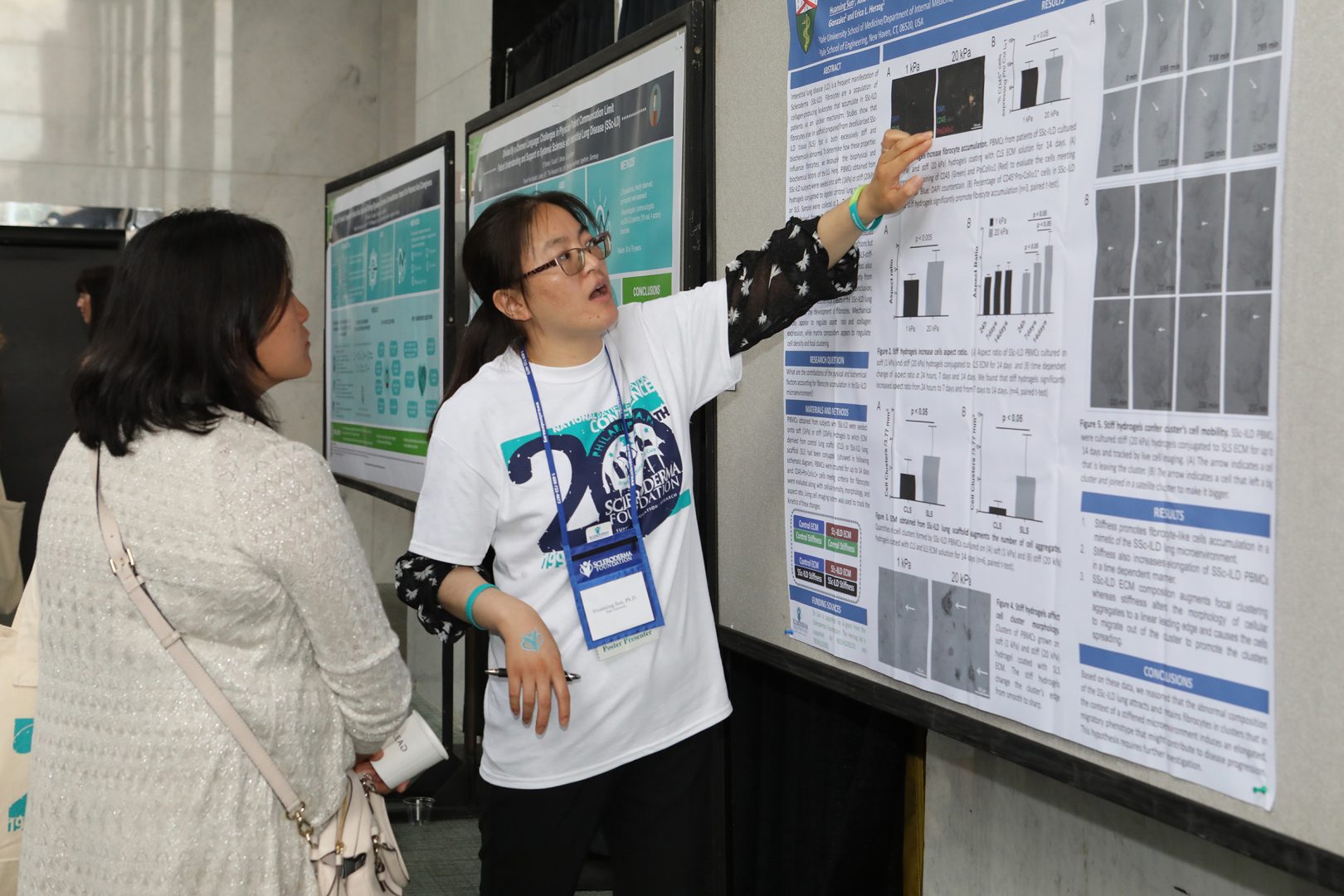How Should A Child With Systemic Sclerosis Be Evaluated?
In order to fully evaluate the disease burden in the pediatric patients, experts in the field recommend the following evaluations during the time of diagnosis.
When possible, since this is a very rare disorder, children should be evaluated at a pediatric scleroderma center.
Evaluation includes:
This includes evaluation of the skin, joints and vessels of the fingertips, called the nailfold capillaries.
- Pediatric rheumatologists use the extent of the skin to help classify the disease subtype, like adult disease.
- Diffuse cutaneous disease (skin thickness spreading above the elbows and knees) is much more common than limited cutaneous disease in children.
Similar to adult scleroderma patients.
- Auto-antibodies, like anti-Scl 70, centromere and PM-Scl, help categorize pediatric patients with scleroderma, like adults.
- Anti-Scl 70 is found in approximately 30-40% of the children, like adult,
- Centromere is rare, found in less than 10% of children,
- “Overlap” antibodies, like Pm-Scl and U1-RNP, those that support scleroderma features as well as features of another connective tissue disease, like dermatomyositis or lupus, are found in about 30% of children, which is more frequent than adults.
Internal organ screening, including the following:
Screening is essential because many children are without symptoms or start to self-limit their activity or eating, so their losses they are experiencing in energy, range of motion, strength, and growth may not be as outwardly apparent.
- Chest X-rays
- Hand X-rays
- Echocardiogram
- EKG
- Esophagram
- Gastric Emptying Study
- Fluoroscopic Swallow Study with Speech Pathology
- Chest CT
- Pulmonary Function Tests, Including a Diffusion Capacity Study
- 6-Minute Walk Test
Foeldvari I, Torok KS. Review for best practice in clinical rheumatology juvenile systemic sclerosis – Updates and practice points. Best Pract Res Clin Rheumatol. 2021 Sep;35(3):101688. doi: 10.1016/j.berh.2021.101688. Epub 2021 Apr 22. PMID: 33896752.
https://pubmed.ncbi.nlm.nih.gov/33896752/
Torok KS. Updates in Systemic Sclerosis Treatment and Applicability to Pediatric Scleroderma. Rheum Dis Clin North Am. 2021 Nov;47(4):757-780. doi: 10.1016/j.rdc.2021.07.004. Epub 2021 Sep 2. PMID: 34635303.
https://pubmed.ncbi.nlm.nih.gov/34635303/
Foeldvari I, Culpo R, Sperotto F, Anton J, Avcin T, Baildam E, Boros C, Chaitow J, Constantin T, Kasapcopur O, Knupp Feitosa de Oliveira S, Pilkington C, Toplak N, van Royen A, Saad Magalhaes C, Vastert SJ, Wulffraat N, Zulian F. Consensus-based recommendations for the management of juvenile systemic sclerosis. Rheumatology (Oxford). 2021 Apr 6;60(4):1651-1658. doi: 10.1093/rheumatology/keaa584. PMID: 33147624.
https://pubmed.ncbi.nlm.nih.gov/33147624/
A very important recent study advocates a baseline chest CT for all juvenile onset systemic sclerosis patients, which parallels adult organ screening recommendations.
Foeldvari I, Klotsche J, Hinrichs B, Helmus N, Kasapcopur O, Adrovic A, Sztajnbok F, Terreri MT, Anton J, Smith V, Katsicas M, Kostik M, Vasquez-Canizares N, Avcin T, Feldman B, Janarthanan M, Santos MJ, Sawhney S, Schonenberg-Meinema D, Sifuentes-Giraldo WA, Alexeeva E, Appenzeller S, Battagliotti C, Berntson L, Bica B, Costa-Reis P, Eleftheriou D, Kallinich T, Lehman T, Marrani E, Minden K, Nielsen S, Nuruzzaman F, Patwardhan A, Khubchandani R, Stanevicha V, Uziel Y, Torok KS. Underdetection of Interstitial Lung Disease in Juvenile Systemic Sclerosis. Arthritis Care Res (Hoboken). 2022 Mar;74(3):364-370. doi: 10.1002/acr.24499. Epub 2022 Feb 17. PMID: 33141441.
https://pubmed.ncbi.nlm.nih.gov/33141441/
Many children do not have cough or breathing problems when evidence of interstitial lung disease is found on imaging.
Silent gastroesophageal reflux may also be related or contribute to interstitial lung disease, supporting GI screening evaluations.
Ambartsumyan L, Zheng HB, Iyer RS, Soares J, Henstorf G, Stevens AM. Relationship between esophageal abnormalities on fluoroscopic esophagram and pulmonary function testing in juvenile systemic sclerosis. Arthritis Care Res (Hoboken). 2018.
https://onlinelibrary.wiley.com/doi/10.1002/acr.23778
Tier 2 studies include the following, if abnormalities or other suspicions are detected during the “tier 1 studies.”
Importantly, if muscle weakness or extensive joint contractures are found on examination an MRI of the muscle is helpful to evaluate for muscle inflammation (myositis), which is more common in children with systemic sclerosis, compared to adults.
Exercise EKG, echocardiogram and Pulmonary function tests are performed on those with questionable pulmonary arterial hypertension on baseline echocardiogram and PFTs.
Right heart catheter is invasive procedure and is reserved for only strong suspicion for pulmonary arterial hypertension
Esophageal manometry (muscle function of the esophagus), pH probe impedance, and GI endoscopy with biopsies, studies are encouraged for those with abnormal initial GI testing and/or persistent GI symptoms or failure to gain weight.

No two scleroderma journeys are the same, but there are common experiences along the way. No matter where you, your child, or a loved one are in your journey, or the type of scleroderma, the National Scleroderma Foundation can help you find your best path.


